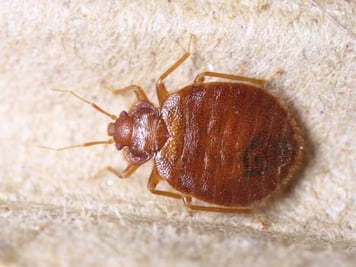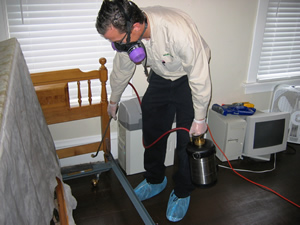A1 Bed Bug Extermination Houston: Professional Providers
Recognizing the Lifecycle of Parasites for Targeted Control Approaches
Comprehending the lifecycle of pests is an essential aspect of efficient pest monitoring methods. With a much deeper understanding of exactly how pests progress and thrive, customized control techniques can be developed to address certain factors in their lifecycle, eventually leading to even more successful insect monitoring outcomes.
Importance of Comprehending Pest Lifecycle
Recognizing the lifecycle of pests is important for establishing reliable and targeted control approaches in pest management. By comprehending the various stages a pest goes through from egg to grownup, pest control specialists can identify prone points in the lifecycle where treatment can be most successful.
Additionally, recognizing the details ecological conditions essential for each and every phase of the parasite's lifecycle can lead choices on environment adjustment or exclusion methods to disrupt the lifecycle and lower insect populations. This expertise makes it possible for pest administration professionals to implement aggressive procedures as opposed to relying only on reactive therapies, causing more lasting and long-lasting insect control solutions. Inevitably, a comprehensive understanding of parasite lifecycles equips pest control experts to tailor their strategies properly, taking full advantage of and minimizing ecological impacts control results.
Key Phases in Pest Advancement
To effectively carry out targeted control strategies in bug monitoring, an essential element depends on comprehensively determining and recognizing the vital stages in insect advancement. Bug growth generally contains numerous key stages that are vital for their lifecycle and management. The very first phase is the egg phase, where parasites lay eggs that later hatch into larvae. Larvae after that proceed right into pupae, a stage where they undergo metamorphosis before becoming grown-up bugs. Recognizing these phases is vital as it aids in pinpointing weak spots in the lifecycle where control actions can be most efficient.

Vulnerabilities in Parasite Lifecycle
Throughout the different stages of a bug's lifecycle, distinct susceptabilities emerge that can be tactically targeted for effective control procedures. One vital vulnerability exists in the egg phase, where bugs are frequently extra vulnerable to certain pesticides or biological control representatives due to their soft outer covering, making them simpler targets for treatment. Furthermore, the larval or nymph phase presents susceptabilities as pests go through quick growth and advancement, requiring high power usage that can be manipulated by disrupting their food resources or introducing development inhibitors. Pupal phases, identified by stability and change, supply a window for targeted control via physical barriers or details treatments that prevent successful emergence. Ultimately, adult bugs, while a lot more resilient as a result of their reproductive capacity, can still be at risk during breeding or egg-laying tasks, which can be interfered with through pheromone traps or sanitation techniques. Comprehending these susceptabilities in the bug lifecycle is essential for developing effective and accurate control methods that successfully take care of parasite populaces while decreasing ecological influence.
Applying Targeted Control Actions
:max_bytes(150000):strip_icc()/Bed-bug-control-tips-and-tricks-2656377-e580f433c55a4a98826e429753062084.jpg)
Carrying out targeted control steps commonly entails a multi-faceted approach. This might include environment modification to my website make the setting much less friendly to bugs, such as getting rid of standing water for mosquito control or securing entry factors for rats. Furthermore, organic control methods can be made use of, where natural predators or virus are introduced to find more information maintain pest populations in check.
Integrated Bug Management (IPM) techniques that integrate different control procedures in a worked with and lasting fashion are often the most effective in accomplishing lasting insect administration objectives. By carrying out targeted control actions based on a comprehensive understanding of insect lifecycles, insect populations can be effectively managed while reducing risks to human health and the setting.
Enhanced Pest Administration Practices

In addition, the unification of organic control agents, such as natural killers or pathogens of bugs, can help in reducing dependence on chemical pesticides and promote a more well balanced ecosystem. Carrying out physical obstacles and traps can also belong to enhanced bug monitoring practices, providing safe and targeted remedies for pest control. Furthermore, using scents and various other semiochemicals can disrupt pest mating patterns and communication, causing lowered parasite populations in time.
Final Thought
By identifying key phases in parasite growth and susceptabilities in their lifecycle, targeted control procedures can be carried out to decrease bug populations. Enhanced pest management visit this site practices can aid minimize the reliance on broad-spectrum chemicals and advertise more lasting and ecologically friendly pest control approaches.
Recognizing the lifecycle of parasites is essential for developing effective and targeted control strategies in pest monitoring. By understanding the different phases an insect goes through from egg to grownup, bug control experts can identify prone points in the lifecycle where treatment can be most successful. Ultimately, a thorough understanding of parasite lifecycles equips pest control experts to tailor their approaches efficiently, minimizing environmental impacts and taking full advantage of control outcomes.
By applying targeted control steps based on a thorough understanding of bug lifecycles, pest populaces can be effectively managed while decreasing risks to human health and wellness and the setting.
By identifying vital stages in bug development and vulnerabilities in their lifecycle, targeted control measures can be executed to decrease pest populations.